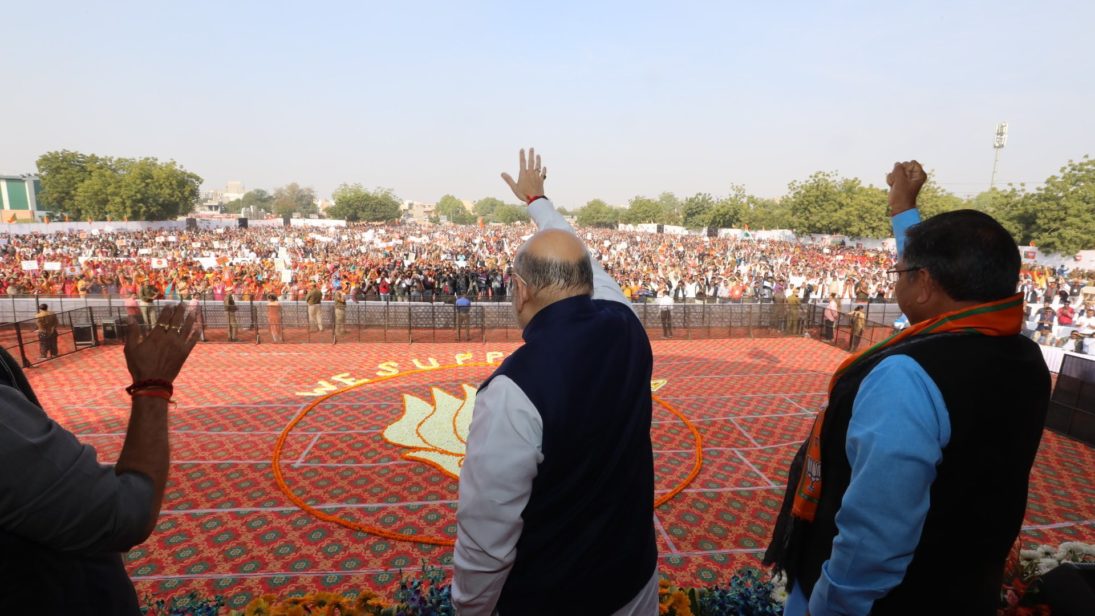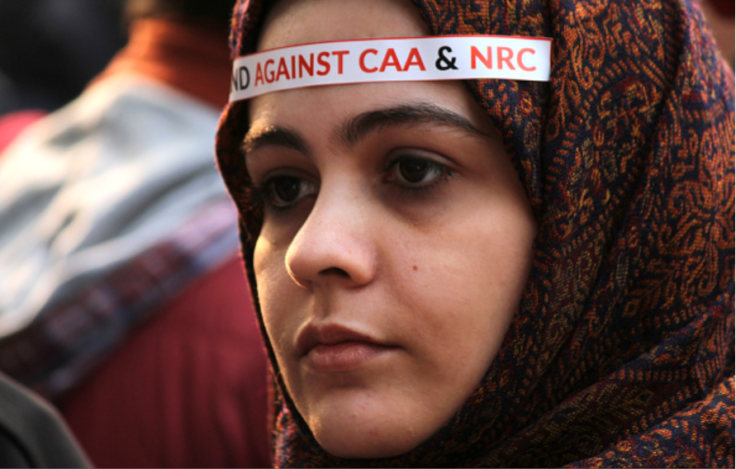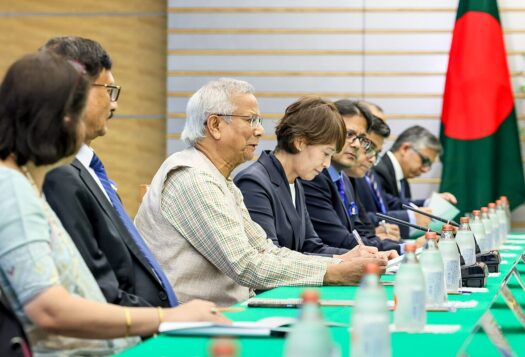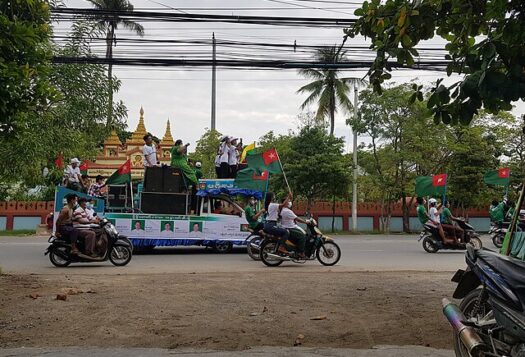
Since Prime Minister Narendra Modi’s re-election in May 2019, the majoritarian impulse of the administration’s domestic policy decisions—from the abrogation of Article 370 to the push for a temple in Ayodhya—has severely affected the social and political fabric of the country. The protests that have erupted across the country following the recent passage of the Citizenship Amendment Act (CAA), however, have seemed to reveal emerging fault lines in the Indian electorate.
With the government’s actions raising serious questions over its constitutional commitments, the ongoing unrest embodies the biggest challenge till date to Modi’s popularity. However, for the ruling Bharatiya Janata Party (BJP) majoritarianism—the view that a nation’s majority population is entitled to certain rights and ownership over a state’s political system—serves to divert attention from rising unemployment and dire economic challenges. Despite the CAA protests, the majoritarian overdrive is still viewed as another way to boost BJP electoral prospects in key upcoming state elections such as Delhi, Bihar, Assam, and West Bengal.
Majoritarian Overdrive in India
With the government’s actions raising serious questions over its constitutional commitments, the ongoing unrest embodies the biggest challenge till date to Modi’s popularity. However, for the ruling Bharatiya Janata Party (BJP), majoritarianism…serves to divert attention from rising unemployment and dire economic challenges.
Since the beginning of Modi’s second term, the BJP has steered forward with its core Hindutva promises and agenda. In perhaps the most visible majoritarian move, the government fulfilled a long held demand within the BJP and abrogated Article 370 of the Indian Constitution, which conferred special status to the state of Jammu and Kashmir. As India’s only Muslim majority state the abrogation of Article 370 along with the revocation of Article 35A—allowing outsiders to settle in Kashmir—have been viewed as a means of altering the demographic makeup of the state in a way more favorable to the government in New Delhi. Further, The Supreme Court of India’s favorable judgement on the Babri Mosque-Ram Janmabhoomi dispute—ruling that the disputed land in Ayodhya will be given to Hindu claimants for a temple, while Muslims will be given an alternate land of five acres at another prominent place—was another victory for the BJP.
Most recently, the government successfully passed the polarizing Citizenship Amendment Act, which includes an amendment to grant citizenship to non-Muslims—Hindus, Sikhs, Christians, Buddhists, Jains, and Parsis—from Bangladesh, Pakistan, and Afghanistan who entered India before December 31, 2014. According to the government, the act seeks to undo the wrongs of Partition by providing a dignified life to the religiously persecuted minorities in the Muslim-dominated countries around India, given Pakistan’s failure to protect these minorities. However, the government’s amended citizenship legislation and suggestions of a nationwide National Register of Citizens (NRC)—like the registry published in Assam in October—have created massive apprehensions over India’s future as a secular state.

Simmering Fault Lines and Rising Unrest Across India
While protests against the CAA have been widespread, the reasons for opposition have differed. In the Northeast, the CAA has created sense of betrayal among the indigenous groups, who contest the CAA on the grounds that it will legalize citizenship claims of foreigners competing for resources in region. Protests in the Northeast have divided the BJP from some of its regional allies, for instance, the Indigenous Peoples Front of Tripura continues sit-in protests against the act. The BJP’s ally in Meghalaya, Chief Minister Conrad Sangma has asked that entirety of Meghalaya and Assam be exempted from the provisions of the CAA. In Assam, indigenous citizens of the Brahmaputra Valley and the All Assam Students Union have also been protesting, arguing that the CAA will nullify the Assam Accord of 1985, which states that foreigners who entered Assam after March 24th, 1971 would be expelled.
In nationwide protests, however, the opposition to the CAA is rooted in claims that it threatens India’s constitution and secular history by using religion as a criteria for citizenship. Many fear the now passed CAA along with a country-wide NRC threaten the citizenship of Muslims in particular by keeping Muslims off the list of religiously persecuted populations—despite Muslim oppression in the region as well. Protests have included an unprecedented level of marches and sit-ins by students. Anger over police brutality or ignoring violence against students on university campuses, including Jamia Millia Islamia, Aligarh Muslim University, and Jawaharlal Nehru University sparked additional protests at campuses across the country. Tensions also spilled over into localities in the national capital of Delhi and Bengal.
Understanding the BJP’s Majoritarian Push
While the passage of the CAA has led to unprecedented protests, the BJP’s majoritarian push is a key electoral strategy as the current government struggles to check India’s economic slowdown. The country’s growth rate has come down to 4.5% for the July-September quarter, the lowest in six years. Issues of unemployment and rural distress have also been affecting the Bharatiya Janata Party (BJP)’s electoral prospects. Despite a mammoth second victory in May 2019, the BJP has been faring relatively poorly at the provincial level. Prior to the general elections, the party suffered losses in three heartland states of Rajasthan, Madhya Pradesh and Chhattisgarh, performed below expectations in Haryana and Maharashtra in October, and lost Jharkhand in December—after losing support among the state’s tribal population.
Consequently, the party has been trying to use the closure of key issues such as the integration of Kashmir and the Ayodhya victory as a selling point in state elections. The combined CAA-NRC issue is the most recent addition of a divisive issue used to mobilize support for the BJP. These developments are meant to help divert attention from a failing economy and consolidate BJP’s electorate across the country. Despite the protests, the BJP has been and continues to emphatically focusing on its traditional voters notably the upper caste Hindus, and other non-dominant intermediary castes across northern, central and western India by focusing on majoritarian causes.
The BJP has been trying to use the closure of key issues such as the integration of Kashmir and the Ayodhya victory as a selling point in state elections. The combined CAA-NRC issue is the most recent addition of a divisive issue used to mobilize support for the BJP.
The party faces tough electoral challenges in Delhi and Bihar, both slated to go to polls in 2020. Without a strong chief ministerial face in Delhi, the BJP is trying to mobilize nationalist sentiments by framing a strong incumbent like Arvind Kejriwal as a supporter of the so-called tukde-tukde gang. The term refers back to 2016 student protesters at JNU charged with sedition after allegedly shouting “anti-national” slogans seeking to “break India,” and has since been used to stigmatize liberals or opposition. With the polls in mind, party president and Home Minister, Amit Shah, has already blamed Delhi opponents for the anti-CAA violence across the capital and vowed to punish them at the ballot. In Bihar, with widespread protests over the CAA-NRC especially in the Muslim-dominated Seemanchal region, the BJP is trying to consolidate its vote share across the state. The BJP performed well in the general elections in alliance with the state-based Janata Dal (United). However, the BJP fears possible fallout with its alliance partner over the NRC, with disagreements already rising within the ranks of JD(U).
The CAA-NRC is the BJP’s biggest electoral weapon in states such as Assam and West Bengal which go to polls in 2021. In both these states, the BJP seeks to consolidate Hindu voters, especially among Bengali-speaking Hindus concerned about citizenship status after the Assam NRC, and project itself as a party that protects the majority against Muslim “outsiders.” With a significant Muslim population in both states, the BJP’s attempt at polarization through the CAA-NRC may enable further schisms among voters on religious lines thereby enabling the party to play to its strengths of communal politics.
Conclusion
The Modi-led government’s majoritarian tendencies are both a product of ideologically-driven revisionism and electoral requirements. In order to accomplish its Hindutva ideals, the political arm of the Hindutva flank has fallen back on its core politics of communal polarization and religious nationalism. Although, the government has made some separate efforts to assuage the concerns of the nationwide protesters and Northeast opposition—embarking on a social media strategy and door-to-door campaigns to promote the CAA and frequently highlighting its commitment to protecting the identity of the Northeast—the push for the CAA shows the same polarizing electoral strategies that contributed to the BJP’s victory in the national elections in May.
The persistence of the protests, however, suggests that the BJP’s one size fits all majoritarian project is facing stiff opposition across major parts of the country. However, the government’s refusal to budge “an inch” and efforts to portray protesters as anti-national or led by “urban naxals,” suggests the government is not defusing dissent, rather relying on it as political fodder to mobilize communal support.
With the CAA coming into effect after a government notification, the following months will likely witness more unrest and polarization as protesters and political parties seek to stall the BJP’s majoritarian overdrive. It remains to be seen whether growing internal strife and emerging global concern forces the BJP to temper its polarizing electoral strategies.
***
Image 1: Amit Shah via Twitter


